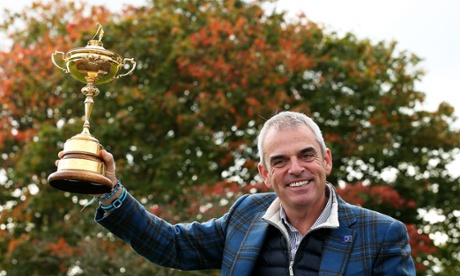
Watching sport has taken on a new dimension with the development of social media. Whether it is people closely following matchups on hashtags or people uploading questionably legal footage to be regularly shared, it is now hardly in doubt that most major sporting activity has found a home on Twitter and Facebook.
It is interesting to see how this manifests itself in one of the world’s most traditional sports - golf. The Ryder Cup was played at the Gleneagles resort, in what some say is the game’s spiritual home of Scotland and many of the strict codes of the game were upheld. However, our exclusive analysis of social media content shows that the way the Ryder Cup was being viewed was anything but traditional.
Were people tweeting where they should not have been?
While the use of mobile phones during the event was not prohibited by competition organisers, nobody was allowed to upload any photos to social media during the event.
To be precise, phones could only be used if they were kept on silent mode and calls had to be made in specified areas. Did these restrictions inhibit anyone from posting on Twitter during the competition? Probably not, but the data we collected allows us to confirm this.
We used the HP Explore tool to capture all tweets and Facebook updates that were openly geotagged within the course boundaries while the matches took place.
The map above shows the intensity of social media uploads from around Gleneagles over the weekend of competition. They provide a pretty good indication of the outline of the course if you take the time to zoom in, as people would have been standing on the sides of different holes to watch.
Not everyone allows geolocation for their tweets but looking at past sports events we have seen that people choose to “check in” to let their friends know they are there. Given that tickets cost up to £145, it is little wonder that spectators would show off that they had got a decent view of the action.
How a certain pop star sent tweets in One Direction
Tracking social media during the competition, we started noticing a huge spike in mentions of the Swedish golfer Henrik Stenson on Friday morning. Although the Swede had a very good match, triumphing in the fourballs with his partner Justin Rose, it did not seem immediately obvious what was driving the attention.
Then we noticed the tone of the tweets, which was evidently different from how other golfers were being mentioned. We quickly found out the source:
Yessss! Get in ! Rosey and Stenson get the first point on the board for @rydercupEUROPE ! Rock solid golf all day !
— Niall Horan (@NiallOfficial) September 26, 2014
The impact of this interaction cannot be understated as anyone who has ever encountered fans of One Direction online will probably know. We tracked just under two million posts during the competition and roughly a third of these directly attributable to Niall Horan’s interest in the Ryder Cup.
One Direction always mess with the trends.
While some may say this is just bringing noise rather than real social engagement, there is a positive note. The evidence seems to suggest that Horan was driving a lot of traffic from those who may not generally have taken an interest in golf.
Take a look at the gender profile of those interacting with One Direction about the Ryder Cup:
Around 40.6% of tweets were confirmed to have been from female users compared to just 18.9% tracked back to males.
That is pretty startling when you consider that female users were responsible for just 15% of tweets we have collected that did not involve One Direction. Social media traffic around the Ryder Cup was for the most part very male dominated.
Given that both the PGA and Golf England are trying to drive participation of females in the sport, getting more girls to take notice cannot hurt at all.
Phil Mickelson v Tom Watson: what did people think of their fallout?
The end of the competition was perhaps overshadowed by the harsh words of US player Phil Mickelson, judged to have been an attack on his team captain Tom Watson.
With the US already smarting from what was a convincing European victory, many in the press (and evidently Mickelson’s team) thought that the veteran players’ comments were inappropriate.
However, what did social media think? We tracked over 5,000 social media mentions of the argument on Twitter, Facebook and in news stories over the course of the final day.
As the chart above shows, the majority did not register any positive or negative sentiment - unsurprisingly as a lot of them were from media companies, reporting the story - but those that did leant heavily towards condemning the spat.
One example was from FOX Sports analyst Robert Lusetich:
Tom Watson took high road after Phil's graceless mutiny but read between the lines of "We got our butts kicked". The players lost #Rydercup
— Robert Lusetich (@RobertLusetich) September 28, 2014
A scan of the 1,800 tweets with a negative take on the evening’s event shows that Lusetich’s tweet pretty much sums up the tone. People were annoyed with Mickelson for lashing out at his captain.
This blog was made possible due to a Guardian’s use of the HP Explore customer analytics tool. While we may have hunches that something is the case, such as most people thinking Mickelson made a bad move, analysing social media on a large scale gave us some hard data to confirm that.

